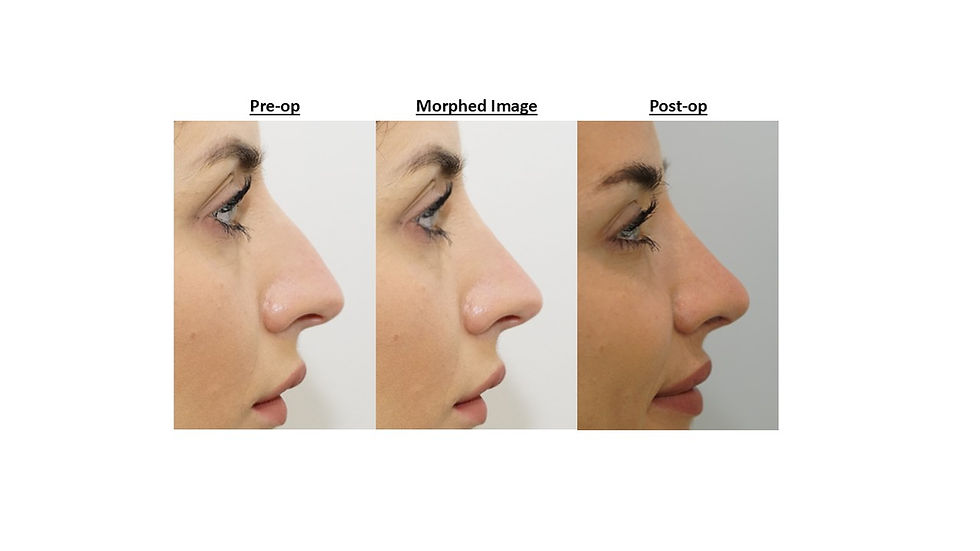Understanding Preservation Rhinoplasty: A Modern Approach to Nasal Surgery
- mrtimbiggs4
- Apr 18
- 3 min read

If you've been exploring rhinoplasty, you may have come across "preservation rhinoplasty." This technique is gaining popularity in the world of nasal surgery. Why? It offers an innovative twist on traditional methods. Let's break it down in simple terms to help you determine if this is the right choice for you.
What Is Preservation Rhinoplasty?
Preservation rhinoplasty is a surgical method that reshapes the nose while keeping as much of the natural nasal structure intact. Instead of removing parts of the nose, this technique gently modifies and preserves the existing framework, specifically the bridge and tip support structures.
This approach focuses on creating subtle, natural-looking results. One key feature is that it often results in less trauma to the surrounding tissues, which can lead to quicker recovery times. For instance, many patients report going back to their regular activities in about one to two weeks rather than the typical three to four weeks associated with traditional methods.
The goal is to enhance your look while maintaining your unique features. For example, preserving nasal structures can lead to results that blend seamlessly with your overall facial profile, producing a more harmonious appearance.
How Is It Different from Traditional Rhinoplasty?
In traditional rhinoplasty, a common action is removing a visible bump on the nose by cutting it off and reshaping the remaining bone and cartilage.
In contrast, preservation rhinoplasty tackles the same bump from beneath. Surgeons adjust the underlying structures, lowering the bridge without altering its natural contour. Patients often feel more satisfied with the organic appearance of their noses when this technique is used.
This method also preserves the ligaments and architecture of the nasal tip, leading to a more natural movement. This approach can result in reduced scarring and enhanced stability, with many patients experiencing limited postoperative swelling—especially at the tip of the nose.
What Are the Benefits?
Preservation rhinoplasty presents several significant benefits:
Natural-looking results: Many patients appreciate the ability to enhance their appearance with a more natural looking end result.
Less swelling: Patients experience significantly less swelling compared to traditional techniques.
Faster recovery: Many individuals return to their daily lives quicker, often after 1 week.
Structural stability: By maintaining the nasal framework, outcomes last longer.
Smooth contours: Patients commonly report feeling more confident in their natural appearance post-surgery.
These features make it an appealing choice for individuals aiming for refined result.
Who Is an Ideal Candidate for Preservation Rhinoplasty?
Not everyone is the right fit for this technique. Ideal candidates typically seek subtle adjustments rather than significant changes. This might include individuals with minor issues like slight dorsal humps or small tip irregularities.
On the other hand, people with severe structural concerns or trauma to the nose may benefit more from traditional techniques, which might involve extensive reconstruction.
To find out what’s best for you, a consultation with a qualified surgeon is essential. They can evaluate your specific situation and recommend the most effective approach to reach your aesthetic goals.
The Importance of Choosing the Right Surgeon
Selecting the right surgeon is crucial for your rhinoplasty journey. An experienced professional can evaluate your unique anatomy and discuss whether preservation rhinoplasty aligns with your desires. Not all surgeons undertake preservation techniques - Mr Tim Biggs is only of an a handful in the South of England that has extensive experience in this technique.
Look for a board-certified surgeon who specialises in both preservation and traditional techniques. An essential step is reviewing before-and-after photos of their past work. This can provide a clear view of their skill level and the results you can realistically expect.
Effective communication is also critical. Make sure you feel comfortable discussing your concerns and treatment plan with the surgeon. A trusting relationship can lead to more successful outcomes and a smoother experience.
The Role of Technology in Preservation Rhinoplasty
Modern advancements in technology have made preservation rhinoplasty increasingly precise. Tools like Piezo allow surgeons to execute surgery with precise cuts and significantly less swelling and brusining.
Final Thoughts
Preservation rhinoplasty is a significant step forward in nasal surgery techniques. By focusing on preserving the natural structure of the nose, this approach offers the chance for subtle enhancements with reduced trauma and quicker recovery.
If you're considering rhinoplasty, exploring this modern technique could lead you to the perfect combination of change and preservation. Be sure to consult with a specialized surgeon to assess your options thoroughly.
Ultimately, preservation rhinoplasty could help you attain the appearance you desire while respecting your unique features.


